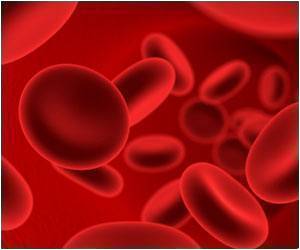A new genetic target for potential therapy of sickle cell disease (SCD) was discovered by a research team from Dana-Farber/Boston Children's Cancer and Blood Disorders Center and other institutions.

Prior work by Orkin and others has shown that when flipped off, BCL11A causes red blood cells to produce fetal hemoglobin that, in SCD patients, is unaffected by the sickle cell mutation and counteracts the deleterious effects of sickle hemoglobin. BCL11A is thus an attractive target for treating SCD.
The disease affects roughly 90,000 to 100,000 people in the United States and millions worldwide.
However, BCL11A plays important roles in other cell types, including the immune system's antibody-producing B cells, which raises concerns that targeting it directly in sickle cell patients could have unwanted consequences.
The discovery of this enhancer—which regulates BCL11A only in red blood cells—opens the door to targeting BCL11A in a more precise manner. Approaches that disable the enhancer would have the same end result of turning on fetal hemoglobin in red blood cells due to loss of BCL11A, but without off-target effects in other cell types.
The findings were spurred by the observation that some patients with SCD spontaneously produce higher levels of fetal hemoglobin and enjoy an improved prognosis. The researchers found that these individuals possess naturally occurring beneficial mutations that function to weaken the enhancer, turning BCL11A's activity down and allowing red blood cells to manufacture some fetal hemoglobin.
Advertisement
"This is a very exciting study," said Feng Zhang, PhD, a molecular biologist and specialist in genome engineering at the McGovern Institute for Brain Research at the Massachusetts Institute of Technology (MIT) and the Broad Institute of MIT and Harvard, who was not involved in the study. "The findings suggest a potential new approach to treating sickle cell disease and related diseases, one that relies on nucleases to remove this regulatory region, rather than adding an exogenous gene as in classic gene therapy."
Advertisement













